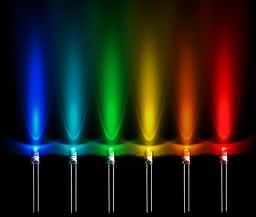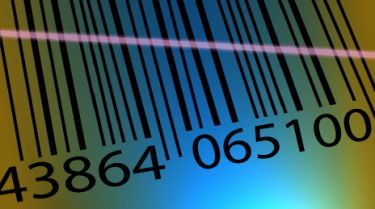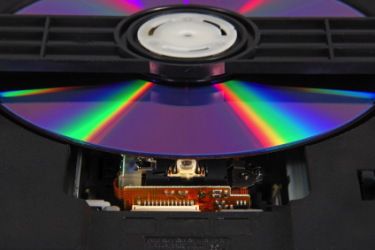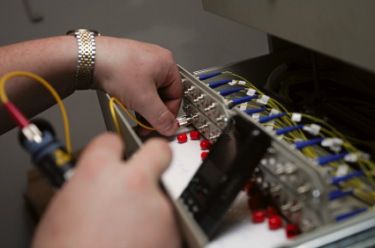A page from the "Causes of Color" exhibit...
Tailoring dopants in semiconductors - LEDs and lasers

Barcode scanners emit a beam of light, and then read and decode its reflection from the barcode itself. The light source may be an LED, photodiode, or semiconductor laser. Other applications of semiconductor devices range from remote controls to laser copiers, from eye surgery to cosmetics, from luminescent fabric to spot welders, and from traffic lights to runway lights. As our ability to grow semiconductors to exacting requirements increases, so does the list of their applications.
Tailoring dopants in semiconductors - LEDs and lasers
Since the latter part of the 20th century, our ability to add specific dopants to semiconductors in distinct concentrations has increased enormously. This parallels the growth of computer technology, and the ever-increasing demand for smaller and more intricate solid-state electronics. Laboratories operating in super-clean conditions are now able to manufacture complex structures with varied semiconductor properties at the micron and even nanometer level. The ability to create tailor-made light-emitting diodes (LEDs) and lasers by adding impurities to semiconductors has spawned a wealth of applications.
At a junction between n-type and p-type semiconductors, a very useful phenomenon occurs. If an electrical field is applied against the natural direction of flow, attempting to direct electrons towards the electron-rich material and away from the positive, hole-rich p-type material, the junction resists the flow of current.
However, if the electrical field is applied so that electrons can move from the n-type region to the p-type region, the semiconductor will conduct the flow very well. This is the basis for transistors.
Injected photoluminescence is the emission of light at a semiconductor junction. If the band gap of the material corresponds to the energy of visible light, light will be emitted as excited electrons drop back to the valence band. Certain semiconductor materials allow us to tune this gap to produce light of a particular color. Combining varying proportions of gallium arsenide (GaAs) with gallium phosphide (GaP) allows us to produce LED lamps emitting red light at 690 nm (1.8 eV) through to yellow at 580 nm (2.14 eV).

Light emitting diodes (LED lamps) commonly found in electronic equipment use injection luminescence. Two semiconductor crystals with opposite doping are joined. At the junction, an electric current applied in the correct direction permits electrons and holes to recombine, emitting light.
The same principle is applied to produce semiconductor lasers. Lasers are beams of light in a coherent direction, amplified to produce an intense beam of light by stimulating emission of photons. Typically, the end surfaces of the semiconductor are polished to reflect emitted light back into the device. While semiconductor lasers do not produce immensely powerful laser beams, they are remarkably useful, in that they are extremely small and require very small power input. Pumping, or light amplification, is produced by strong illumination or by electrical excitation.
Advanced techniques for growing semiconductors on a substrate such as silicon have opened the door for the design of complex structures, such as multiple quantum well lasers, quantum wire, quantum dot, and nanocrystal devices. At this level, the effects produced are understood in terms of quantum wave theory, rather than band theory.
Applications of semiconductor lasers in electronics, cosmetic surgery and medicine. A laser beam is used to read a CD or DVD. Lasers can be used to remove hair and treat scar tissue. In medicine, uses of lasers include eye surgery to correct myopia, location and treatment of cavities in dentistry, and removal of damaged or diseased tissue during surgery.







